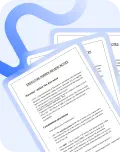#9212 - The Supreme Court’s Authority And Role - Constitutional Law
The Pres. Nominates Justices but Art. III §2, cl.2 says that the appointment won’t be effective unless the Senate approves it.
So it used to be the view that the Senate could reject a nominee only on grounds of incompetence or defects in character or temperament
But now (since Reagan) have a Judiciary Committee which feels free to probe even ideology but it doesn’t always make a difference cause nominee usually refuses talk about it.
Jusitces appointed to the ct “to hold their offices during good behavior” but Art. IV says officer of US. may be removed from office by Impeachment for and conviction of Treason, Bribery, or other High Crimes and misdemeanors
So ideology isn’t a proper ground for impeachment and there has never been a Justice impeached.
Congress has power to set the size of and budget for the Court & this can be a potential source of political checking on the courts power
(ie. setting the time at which the Court meets can be used to serve political means, increase # or justices, etc)
Congress, under Art. III §2, has the power to make “exceptions” to the Supreme Courts appellate jurisdiction
There have been failed congressional proposals to eliminate the Court’s appellate jurisdicition in such controversial areas and busing, abortion, and school prayer.
Internal Limits: Cong. Can’t remove the essential functions of the ct or do anything to destroy the essential role of the Sup. Ct., in the const. plan.
External Limits: Cong couldn’t bar Sup Ct. review by excluding certain litigants on the basis of race or political beliefs.
Art. V specifies 2 ways for Amend. Const:
1st: Congress, by 2/3 vote, proposes amend which must be ratified by of the States
2nd: 2/3 States apply to Congress to call a Constitutional Convention (never tried)
An amend to text of const. to reject a sup. Ct. ruling binds the Court and supersedes its prior decision.
Only done 4 times: (1) 11th Amend overruled Chisholm v. Georgia & gave states immunity against certain suits in Fed ct. (2) 14th Amend reversed Dred Scott decision & gave citizenship to former slaves (3) 16th Amend circumvented Pollack v. Farms Loan to permit a fed income tax (4)26th Amend overturned Oregon v. Mitchell & requires states to grant voting rights to 18 yr. olds.
purchase it now!

